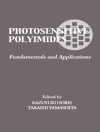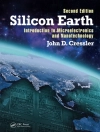This is the first volume of the four volume set of Handbook of Functional Nanomaterials. Functional nanomaterials appear in our daily lives. These materials mainly include nanocomposites, nanopowders, nanoparticles and nanocoatings. Nanotechnology enables the creation of structures that do not exist in nature, those which cannot be produced by conventional chemistry. Some advantages of this technology are the synthesis of stronger, more adjustable materials as well as lower costs. Nanotechnology is scientific and research development at the atomic, molecular, or macromolecular levels in a dimension range of 1 to 100 nm; the fabrication and application of the structures, equipment, and systems which involve unique characteristics and new applications because of their small or medium dimensions; and the potential for (materials and processes) and control and management of atomic scales. Therefore, nanotechnology involves industrial research and development at atomic, molecular, and macromolecular levels. This research aims to create and exploit the structures and systems which involve unique applications due to their small dimensions. The main difference between nanotechnology and other technologies is found within the dimensions and properties of the materials and structures applied to this technology. As a matter of fact, the main difference between these two types of technologies is the presence of base elements, which are indeed the same nanoscale elements with different properties in their nanoscale and larger states. Due to the developed properties of the very fine powders including surface chemistry, compressive properties, optical characteristics, and synthetic reactions, as well as an increasing demand for fine powders in industries, a very fine fragmentation is applied in many materials such as: minerals, ceramics, dyes, chemicals, microorganisms, pharmaceuticals and paper manufacturing. This volume mainly discusses the synthesis and modification of functional nanomaterials. Some of the functional nanomaterials discussed in this volume are zinc oxide nanoparticles, iron oxide, cadmium chalcogenide nanoparticles, chitosan-based nanocomposites, mesoporous materials, gallium nitride nanowires, titania nanoparticles, plasmonic nanofilms, polyaniline nanocomposites and nano silver. There are 19 chapters in this volume; each one includes examples of these interesting materials, supported by appropriate figures for better clarification.
Mahmood Aliofkhazraei
Handbook of Functional Nanomaterials. Volume 1 – Synthesis and Modification [PDF ebook]
Handbook of Functional Nanomaterials. Volume 1 – Synthesis and Modification [PDF ebook]
购买此电子书可免费获赠一本!
格式 PDF ● 网页 416 ● ISBN 9781629483658 ● 编辑 Mahmood Aliofkhazraei ● 出版者 Nova Science Publishers ● 发布时间 2015 ● 下载 3 时 ● 货币 EUR ● ID 7223771 ● 复制保护 Adobe DRM
需要具备DRM功能的电子书阅读器












